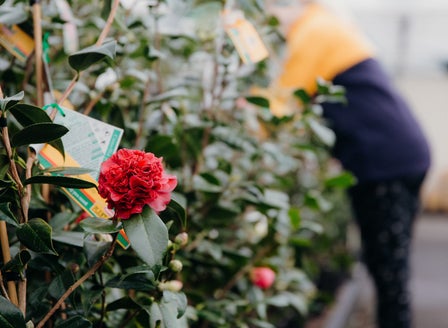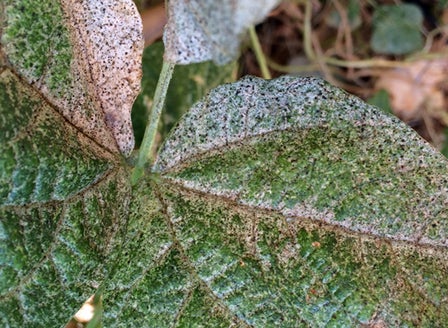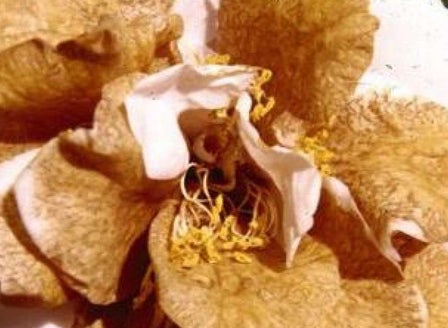Camellias are fantastic when used as hedging or screening, and they make beautiful feature plants too. Their thick, glossy evergreen foliage creates a lush backdrop to the stunning blooms that appear from autumn to spring.
Planting Calendar
Camellias are best planted from March to November.
Prepare
Position
Most camellias prefer a semi-shaded position – on the south west side of the house, or in dappled shade under trees. They will grow in full sun, especially the Sasanqua varieties, but prefer protection from strong sun and harsh winds is best.
Soil
When planted into the ground Camellias like a acidic, free draining soil that is rich in organic matter. To improve the organic content of your soil and provide acidity, dig over and add Kings Compost, Kings Sheep Pellets and some Kings Azalea Camellia, Rhododendron food then mix together well. When grown in containers, plant into Kings Container mix. This mix contains added water storage crystals and Saturaid, two products that help maintain moisture in the soil.
Plant
Gently tap the plant out of its pot. Dig a hole twice the depth and width of the plants root ball. Mix a 50/50 mixture of Kings Compost into your existing soil with the addition of Sheep Pellets and Kings Azalea, Camellia and Rhododendron Food then mix together well. Back fill the hole with this soil, so that when planted the top of the plant’s roots sit level with the surrounding ground. Firm the soil down gently and water in well with Aquaticus Organic Garden Booster.
Care
Watering
Watering is essential especially in the first year of planting to allow the roots to get well established. Water slowly allowing the water to sink down into the roots, rather than allowing it to run off the top of the soils surface. Add Saturaid into the soil at planting as this will help channel the water deep down into the root zone. Consider setting up an automatic watering system – these can be simple and inexpensive. They enjoy good soil moisture in summer. Inadequate water may cause flower buds to drop off and yellowing of the leaves..
Feeding
Feed with an acidic fertiliser such as Kings Slow Release Azalea, Camellia, Gardenias & Rhododendron Food in spring and autumn. Sequestron is a yellow leaf plant tonic. Use Sequestron monthly as a tonic throughout the year, making sure you follow the directions on the bottle. Monthly application of Aquaticus Organic Garden Booster will ensure your plants have healthy strong roots.
Protecting
Protect against pests by spraying monthly with Groventive Garden or for an organic option Aquaticus Bugtrol
Mulching
Mulch around the base of the plants (make sure that the mulch does not come into direct contact with the stem of the plant) with Living Earth More than Mulch. Mulching helps to reduce weeds as well as aiding the soil to retain moisture.
Pruning
Pruning is only required if you want to create a hedge or reduce the size of your Camellia. Regular pruning is essential if you want to create a dense, well-structured hedge. Ensure that you use sharp tools to avoid brown jagged edges on the leaves. Avoid pruning in summer as this is when the next season flower buds are produced.
General Care
When using sprays, chemicals or fertilisers always read the label and follow the instructions. Apply sprays in the evening to avoid harming beneficial insects.
Beginner Tip
Coffee grounds are naturally acidic so add to the top of the soil.
Expert Tip
Camellias set their next seasons flower bud during the summer months. It is more important at this time to ensure the soil is kept moist.
Top Varieties
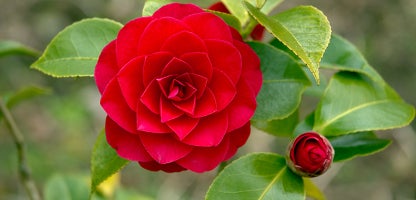
Japonica Camellias
Bred for the past 300 years, there are now many different varieties of Camellia japonica. A slower growing variety which has large glossy leaves and larger flowers that come in many shapes and forms. Japonica camellias flower from early winter to late spring and prefer to be grown in a shader spot in the garden.
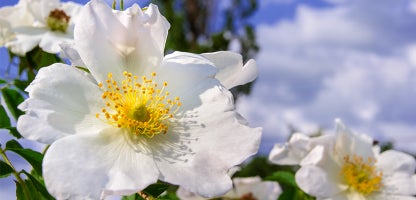
Sasanqua Camellias
Also known as the ‘autumn camellia’, the Sasanqua variety originates from Japan, and blooms from early autumn until mid-winter. While the flowers and leaves are relatively small, this makes them ideal for warmer parts of the garden or as hedging. Sasanqua camellias are well suited to sunny positions. When in bloom, the flowers completely cover the plant and are a food source for bees.
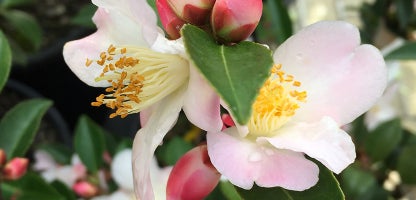
Hybrid Camellias
Bred to be the best-performing camellias, hybrids offer a range of benefits from both Sasanqua and Japonica. Best grown in full sun to part shade, they have both small to large blooms (many with fragrances) and can flower from early autumn to as late as early summer. Best grown for hedging and as a feature plant.
Frequently Asked Questions
Why are my camellia leaves turning yellow?
Too much sun can cause the leaves to go yellow especially on Japonica types as they prefer more shade. Regular deep watering is needed as well as a specific Camellia fertiliser to provide the right balance of nutrients
Why do the leaves on my Camellia have black bumps on them?
This is called Edema. It is a disorder of plants caused by the roots taking up more water than the leaves can transpire. This excess water causes the cells to rupture in the leaves, causing them to develop corking brown/black bumps. Even amounts of water are key in preventing this disorder. Water well and deeply, ensuring the water sinks down to the roots 3 times a week during summer to keep the soil evenly moist.
What kind of soil do Camellias prefer?
When planted into the ground Camellias like a acidic, free draining soil that is rich in organic matter. To improve the organic content of your soil and provide acidity, dig over and add Kings Compost, Kings Sheep Pellets and some Kings Azalea Camellia, Rhododendron food then mix together well.
How often should I water my Camellias?
Watering is essential especially in the first year of planting to allow the roots to get well established. Water slowly allowing the water to sink down into the roots, rather than allowing it to run off the top of the soils surface. Add Saturaid into the soil at planting as this will help channel the water deep down into the root zone. Consider setting up an automatic watering system – these can be simple and inexpensive.
How do I prune Camellias, and when should it be done?
Pruning is only required if you want to create a hedge or reduce the size of your Camellia. Regular pruning is essential if you want to create a dense, well-structured hedge. Ensure that you use sharp tools to avoid brown jagged edges on the leaves. Avoid pruning in summer as this is when the next season flower buds are produced.
